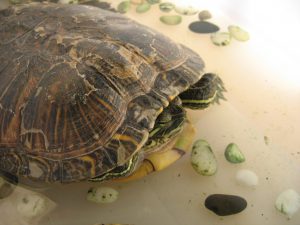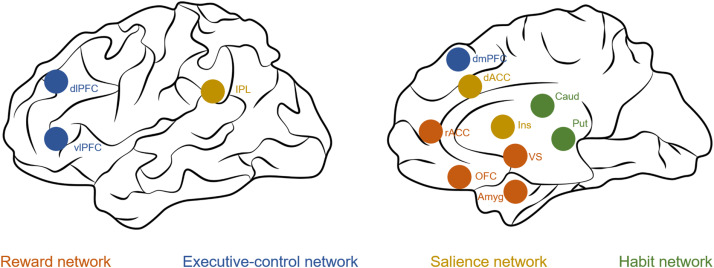5.1 Overview
What do you like to do?

If any of these apply to you, awesome, you are a human being with likes and dislikes! As humans we participate in any number of activities and behaviours depending on a multitude of factors including our exposure to activities, our upbringing, our socio-economic status and more. Have you ever thought about what you do when you are feeling stressed? Do these same activities apply, or do you do something else completely? If you are like some, you may ignore what is going on around you, including the problem you are dealing with (sometime called turtling).
What happens when a behaviour that we find rewarding becomes an issue or a problem? One of the questions we should ask is who decides a behaviour is an issue: an individual, a community, or a society? This will help us unpack whether a behaviour is concerning, and the ways we might address it.
Food For Thought
- What are your favorite activities?
- Are your activities hobbies? Part of your job?
- How much time do you spend doing them?
- Is there a cost associated? How much have you spent on this activity?
- Is this an activity you do to make yourself happy when you are feeling sad/stressed/angry/upset?
- Do you do different activities when you are feeling unhappy feelings?
As noted above, most people have activities they enjoy doing, and activities that help them cope with life’s daily stressors as well as more significant stresses or even traumatic experiences. Coping skills are important, and as Social Service workers, having a set of effective coping skills for managing stress is important. You can help your clients discover coping skills that are healthy.
5.1A Activities
- Brainstorm possible coping strategies for life stress.
- Brainstorm possible coping strategies for work stress.
- Compare and contrast. Are there differences? Why do you think so?
The term ‘addiction’ and more recently substance use disorder describes a person’s use of substances and incorporates several features, such as repetitive engagement in behaviours that are rewarding, loss of control, persistent use despite negative consequences, and physical dependence, evidenced by withdrawal.[1] If this is the criteria for a substance use disorder, is it possible for a behaviour to fall in this category. When does an activity become an addiction or disorder?
5.1B Activity
- Debate “addiction” as theorized and defined above. Can a person experience this with a behaviour? Why or why not?
Please watch the video[2] below to further your understanding of the concept of process addiction.
According to the American Psychiatric Association, a behaviour can be a disorder: “behavioural addictions result in a failure to resist an impulse, drive, or temptation to perform an act that is harmful to the person or to others”.[3] This would suggest many activities and Grant et al.,[4] suggest that “behavioural addictions include pathological gambling, kleptomania, pyromania, compulsive buying, compulsive sexual behaviour, Internet addiction, and binge eating disorder”[5]; however according to the DSM-V, only one behaviour is currently considered a disorder: gambling.
Food For Thought
- Why do you think is gambling the only activity that is considered a disorder?
- Who makes the decisions on what is considered a disorder or addiction?
- Is a compulsion an addiction? Why or why not?
- Are there other activities that you think should be included? Why?
The research is emerging on process addiction as well as treatment types for behaviours; however, various activities including eating, shopping, sexual behaviours, internet use, and others are not considered a disorder or addiction. Why? At this time there does not seem to be a consensus among researchers on process/behavioural addiction related to the DSM-V. For this text, we will examine gambling in section 5.2, as identified/quantified in the DSM -5 as a disorder. “Of existing disorders, only gambling had enough in common with substance use disorders to justify its inclusion”.[6] We will also examine other disorders as suggested by Grant et al.[7]
It is possible for other behaviours including compulsive shopping, internet use/gaming, and sexual behaviour to be considered a disorder though they are not a part of the DSM-V. The World Health Organization would suggest other behaviours be considered as they have “held annual meetings since 2014 to discuss pressing needs, research agendas and policy initiatives related to Internet use, with gaming disorder being proposed as a formal diagnosis”.[8]
5.1C Activities
- Research 3 current studies on process addiction excluding gambling. What did you find?
- Who is doing the research?
- Who is publishing the research?
- What theories are associated with behaviours as process addiction?
How are process addiction and substance use disorders similar? It has been suggested “that some conditions, such as gambling disorder, compulsive stealing, compulsive buying, and compulsive sexual behavior, and problem internet use, have phenomenological and neurobiological parallels with substance use disorders”.[9]
For clients who have compulsive sexual behaviours and those who have substance use disorders, brain activity is mirrored in the areas of the ventral striatum, dorsal anterior cingulate and amygdala.[10] If you examine these parts of the brain, the ventral striatum focuses on reward and motivation; the dorsal anterior cingulate anticipates rewards and cravings.[11] It seems as if the behaviour triggers the brain and while it may not be as quick or intense as a substance there is still an impact on the reward areas of the brain.

5.1D Activity
- Refer to Chapter 4 and review the impact of a substance on the brain, on the body, tolerance, and withdrawal. Compare and contrast with process addiction. What did you find?
As Social Service workers, continuing your own evidence-based research will be helpful when working with individuals who are engaging in process addiction. This may help you help them identify and reduce the harms associated with any of these behaviours and promote healthier choices.
Image Credits
- Hiding by Simon Law via flickr is licensed under CC BY-SA 2.0.
- Networks of the brain from: Antons, S., Brand, M., & Potenza, M. N. (2020). Neurobiology of cue-reactivity, craving, and inhibitory control in non-substance addictive behaviors. Journal of the Neurological Sciences, 415, 116952. https://doi.org/10.1016/j.jns.2020.116952
- Chamberlain, S., Lochner, C., Stein, D., Goudriaan, A., Van Holst, R., Zohar, J., & Grant, J. (2015). Behavioural addiction—A rising tide? European Neuropsychopharmacology, 26(5), 841-855. https://pubmed.ncbi.nlm.nih.gov/26585600/ ↵
- Sunrise Residential Treatment Centre. (2015, May). What is a process addiction? [Video]. YouTube. https://www.youtube.com/watch?v=oZjZcSOGj6o ↵
- American Psychiatric Association. (2013). Diagnostic and statistical manual of mental disorders. 5th edition. https://journals.sagepub.com/doi/pdf/10.1177/070674371305800502 ↵
- Ibid. ↵
- Ibid. ↵
- Grant, J. E., & Chamberlain, S. R. (2016). Expanding the definition of addiction: DSM-V vs. ICD-11. CNS Spectrums, 21(4), 300–303. https://doi.org/10.1017/S1092852916000183 ↵
- Grant, J. E., Schreiber, L., & Odlaug, B. (2013). Phenomenology and treatment of behavioural addictions. Canadian Journal of Psychiatry, 58(5), 252-259. https://journals.sagepub.com/doi/pdf/10.1177/070674371305800502 ↵
- Potenza, M., Higuchi, S., & Brand, M. (2018). Call for research into a wider range of behavioural addictions. Nature, 555(7694), 30. https://doi.org/10.1038/d41586-018-02568-z ↵
- Grant, J. E., Schreiber, L., & Odlaug, B. (2013). Phenomenology and treatment of behavioural addictions. Canadian Journal of Psychiatry, 58(5), 252-259. https://journals.sagepub.com/doi/pdf/10.1177/070674371305800502 ↵
- Voon, V., Mole, T. B., Banca, P., Porter, L., Morris, L., Mitchell, S., Lapa, T. R., Karr, J., Harrison, N. A., Potenza, M., & Irvine, M. (2014). Neural correlates of sexual cue reactivity in individuals with and without Compulsive Sexual Behaviours. PLoS ONE, 9(7), 1-10. https://pdfs.semanticscholar.org/a413/18f2d3bb6c04796113 adb93c74e86ccd63b9.pdf?_ga=2.263209419.690242277.1636907049-69174705.1620417751 ↵
- Ibid. ↵

